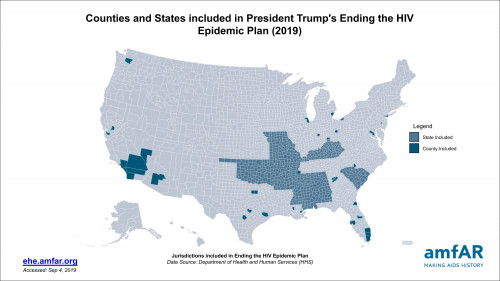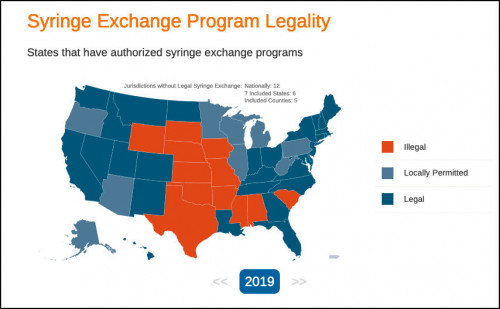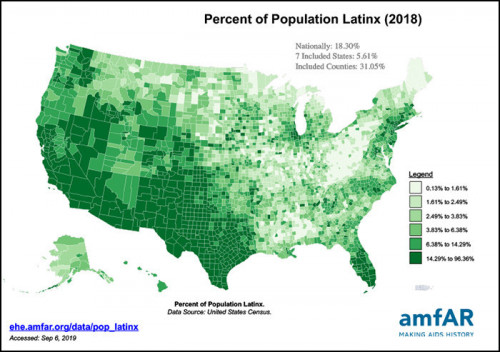Have you ever been curious about the opioid and HIV epidemic in your own neighborhood or state—and how they relate to the Latino population? For example, how many people tested HIV positive in your county and state? Are needle exchange programs legal where you live? Where’s the nearest substance use disorder facility? What about the proportion of residents without health insurance or the prevalence of sexually transmitted infections? What percentage of the population is Latino? And will your neighborhood benefit from Trump’s plan to end HIV?

Sample graphic found on the End the HIV Epidemic DatabaseCourtesy of ehe.amfar.org
For answers to these and many more questions, visit two new interactive websites by amfAR, The Foundation for AIDS Research: the Ending the HIV Epidemic Database (ehe.amfar.org) and the Opioid & Health Indicators Database (opioid.amfar.org).

Sample graphic found on the End the HIV Epidemic DatabaseCourtesy of ehe.amfar.org
Both sites allow you not only to view data, policies, health indicators and more but also to create and export maps and graphs, like those found in this article.
In February, Trump announced an initiative titled “Ending the HIV Epidemic: A Plan for America.” (The amfAR site refers to this as the Ending the HIV Epidemic Initiative, or EHE.) The federal plan sets the goal of lowering new HIV rates nationwide by 75% in five years and 90% in 10 years. One way to accomplish this is to target federal resources to the 48 counties (plus Washington, DC, and San Juan, Puerto Rico) that account for more than half the new HIV diagnoses in the country; in addition, seven rural states with higher rates will also receive federal help. (Learn more about the plan on POZ.com and on HIV.gov.)

Sample graphic found on the End the HIV Epidemic DatabaseCourtesy of ehe.amfar.org
According to amfAR, the goals of its EHE site are:
- To help a broad audience understand the opportunities and challenges across EHE jurisdictions;
- To assist EHE sites in identifying other jurisdictions with similar policies, services or infectious disease contexts to share planning and intervention strategies;
- To provide supplemental and complementary information to better evaluate outcomes across EHE sites.
Similarly, the opioid database is “designed to support communities, lawmakers and advocates in making informed decisions about the opioid epidemic and its impact on HIV and hepatitis C. The site is a window into the opioid epidemic unfolding in every American’s backyard—it provides local to national statistics using reliable data sources on new HIV and hepatitis C infections, opioid use and overdose death rates, and the availability of services like drug treatment programs and syringe exchange services. In addition, users can examine data at the state or the county levels to see the differential impact of the opioid epidemic by state or within states.”

Sample graphic found on the End the HIV Epidemic DatabaseCourtesy of ehe.amfar.org

Sample graphic found on the End the HIV Epidemic DatabaseCourtesy of ehe.amfar.org
In related news, the United States Conference on AIDS (USCA) takes place September 5 to 8 in Washington, DC. This year’s event will focus in large part on the federal HIV initiative and how jurisdictions and advocates can work with the government to build plans to fight the epidemic.
For an interview with Paul Kawata, the executive director of NMAC, which leads USCA, click here.







Comments
Comments